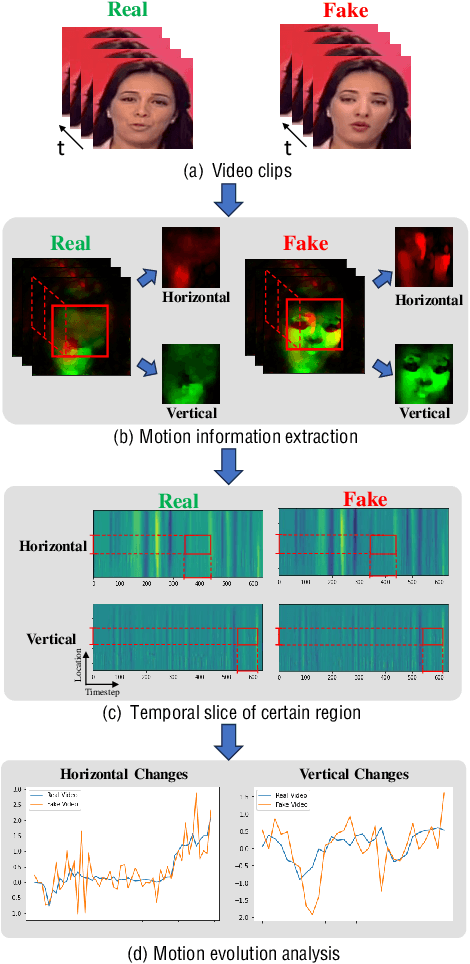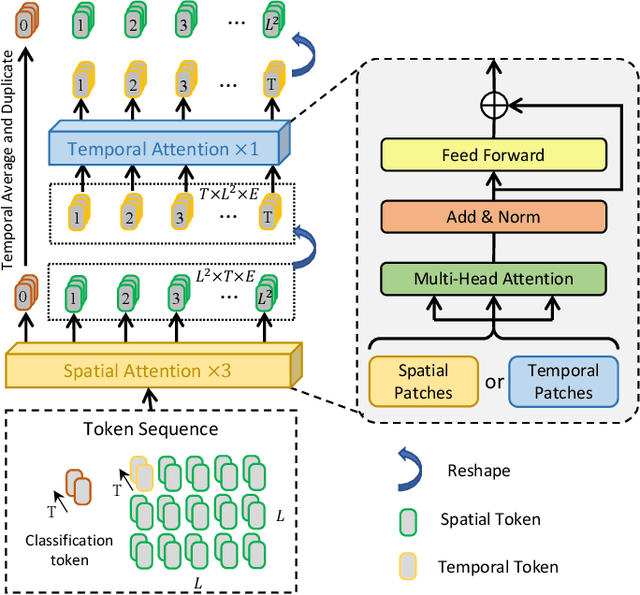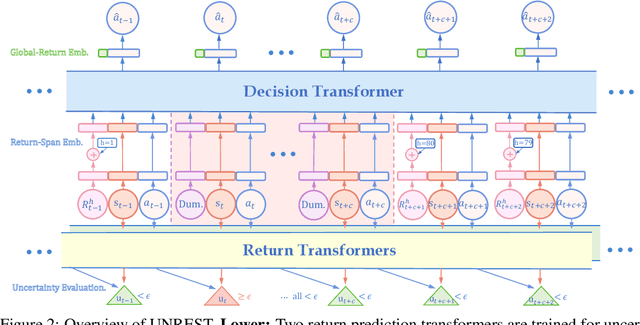Fan Nie
Weak-for-Strong: Training Weak Meta-Agent to Harness Strong Executors
Apr 07, 2025Abstract:Efficiently leveraging of the capabilities of contemporary large language models (LLMs) is increasingly challenging, particularly when direct fine-tuning is expensive and often impractical. Existing training-free methods, including manually or automated designed workflows, typically demand substantial human effort or yield suboptimal results. This paper proposes Weak-for-Strong Harnessing (W4S), a novel framework that customizes smaller, cost-efficient language models to design and optimize workflows for harnessing stronger models. W4S formulates workflow design as a multi-turn markov decision process and introduces reinforcement learning for agentic workflow optimization (RLAO) to train a weak meta-agent. Through iterative interaction with the environment, the meta-agent learns to design increasingly effective workflows without manual intervention. Empirical results demonstrate the superiority of W4S that our 7B meta-agent, trained with just one GPU hour, outperforms the strongest baseline by 2.9% ~ 24.6% across eleven benchmarks, successfully elevating the performance of state-of-the-art models such as GPT-3.5-Turbo and GPT-4o. Notably, W4S exhibits strong generalization capabilities across both seen and unseen tasks, offering an efficient, high-performing alternative to directly fine-tuning strong models.
TAROT: Targeted Data Selection via Optimal Transport
Nov 30, 2024Abstract:We propose TAROT, a targeted data selection framework grounded in optimal transport theory. Previous targeted data selection methods primarily rely on influence-based greedy heuristics to enhance domain-specific performance. While effective on limited, unimodal data (i.e., data following a single pattern), these methods struggle as target data complexity increases. Specifically, in multimodal distributions, these heuristics fail to account for multiple inherent patterns, leading to suboptimal data selection. This work identifies two primary factors contributing to this limitation: (i) the disproportionate impact of dominant feature components in high-dimensional influence estimation, and (ii) the restrictive linear additive assumptions inherent in greedy selection strategies. To address these challenges, TAROT incorporates whitened feature distance to mitigate dominant feature bias, providing a more reliable measure of data influence. Building on this, TAROT uses whitened feature distance to quantify and minimize the optimal transport distance between the selected data and target domains. Notably, this minimization also facilitates the estimation of optimal selection ratios. We evaluate TAROT across multiple tasks, including semantic segmentation, motion prediction, and instruction tuning. Results consistently show that TAROT outperforms state-of-the-art methods, highlighting its versatility across various deep learning tasks. Code is available at https://github.com/vita-epfl/TAROT.
FactTest: Factuality Testing in Large Language Models with Statistical Guarantees
Nov 04, 2024



Abstract:The propensity of Large Language Models (LLMs) to generate hallucinations and non-factual content undermines their reliability in high-stakes domains, where rigorous control over Type I errors (the conditional probability of incorrectly classifying hallucinations as truthful content) is essential. Despite its importance, formal verification of LLM factuality with such guarantees remains largely unexplored. In this paper, we introduce FactTest, a novel framework that statistically assesses whether an LLM can confidently provide correct answers to given questions with high-probability correctness guarantees. We formulate factuality testing as hypothesis testing problem to enforce an upper bound of Type I errors at user-specified significance levels. Notably, we prove that our framework also ensures strong Type II error control under mild conditions and can be extended to maintain its effectiveness when covariate shifts exist. %These analyses are amenable to the principled NP framework. Our approach is distribution-free and works for any number of human-annotated samples. It is model-agnostic and applies to any black-box or white-box LM. Extensive experiments on question-answering (QA) and multiple-choice benchmarks demonstrate that \approach effectively detects hallucinations and improves the model's ability to abstain from answering unknown questions, leading to an over 40% accuracy improvement.
DIP: Diffusion Learning of Inconsistency Pattern for General DeepFake Detection
Oct 31, 2024



Abstract:With the advancement of deepfake generation techniques, the importance of deepfake detection in protecting multimedia content integrity has become increasingly obvious. Recently, temporal inconsistency clues have been explored to improve the generalizability of deepfake video detection. According to our observation, the temporal artifacts of forged videos in terms of motion information usually exhibits quite distinct inconsistency patterns along horizontal and vertical directions, which could be leveraged to improve the generalizability of detectors. In this paper, a transformer-based framework for Diffusion Learning of Inconsistency Pattern (DIP) is proposed, which exploits directional inconsistencies for deepfake video detection. Specifically, DIP begins with a spatiotemporal encoder to represent spatiotemporal information. A directional inconsistency decoder is adopted accordingly, where direction-aware attention and inconsistency diffusion are incorporated to explore potential inconsistency patterns and jointly learn the inherent relationships. In addition, the SpatioTemporal Invariant Loss (STI Loss) is introduced to contrast spatiotemporally augmented sample pairs and prevent the model from overfitting nonessential forgery artifacts. Extensive experiments on several public datasets demonstrate that our method could effectively identify directional forgery clues and achieve state-of-the-art performance.
Generalizing Motion Planners with Mixture of Experts for Autonomous Driving
Oct 21, 2024



Abstract:Large real-world driving datasets have sparked significant research into various aspects of data-driven motion planners for autonomous driving. These include data augmentation, model architecture, reward design, training strategies, and planner pipelines. These planners promise better generalizations on complicated and few-shot cases than previous methods. However, experiment results show that many of these approaches produce limited generalization abilities in planning performance due to overly complex designs or training paradigms. In this paper, we review and benchmark previous methods focusing on generalizations. The experimental results indicate that as models are appropriately scaled, many design elements become redundant. We introduce StateTransformer-2 (STR2), a scalable, decoder-only motion planner that uses a Vision Transformer (ViT) encoder and a mixture-of-experts (MoE) causal Transformer architecture. The MoE backbone addresses modality collapse and reward balancing by expert routing during training. Extensive experiments on the NuPlan dataset show that our method generalizes better than previous approaches across different test sets and closed-loop simulations. Furthermore, we assess its scalability on billions of real-world urban driving scenarios, demonstrating consistent accuracy improvements as both data and model size grow.
Learning Divergence Fields for Shift-Robust Graph Representations
Jun 07, 2024



Abstract:Real-world data generation often involves certain geometries (e.g., graphs) that induce instance-level interdependence. This characteristic makes the generalization of learning models more difficult due to the intricate interdependent patterns that impact data-generative distributions and can vary from training to testing. In this work, we propose a geometric diffusion model with learnable divergence fields for the challenging generalization problem with interdependent data. We generalize the diffusion equation with stochastic diffusivity at each time step, which aims to capture the multi-faceted information flows among interdependent data. Furthermore, we derive a new learning objective through causal inference, which can guide the model to learn generalizable patterns of interdependence that are insensitive across domains. Regarding practical implementation, we introduce three model instantiations that can be considered as the generalized versions of GCN, GAT, and Transformers, respectively, which possess advanced robustness against distribution shifts. We demonstrate their promising efficacy for out-of-distribution generalization on diverse real-world datasets.
UAlign: Pushing the Limit of Template-free Retrosynthesis Prediction with Unsupervised SMILES Alignment
Mar 25, 2024Abstract:Retrosynthesis planning poses a formidable challenge in the organic chemical industry, particularly in pharmaceuticals. Single-step retrosynthesis prediction, a crucial step in the planning process, has witnessed a surge in interest in recent years due to advancements in AI for science. Various deep learning-based methods have been proposed for this task in recent years, incorporating diverse levels of additional chemical knowledge dependency. This paper introduces UAlign, a template-free graph-to-sequence pipeline for retrosynthesis prediction. By combining graph neural networks and Transformers, our method can more effectively leverage the inherent graph structure of molecules. Based on the fact that the majority of molecule structures remain unchanged during a chemical reaction, we propose a simple yet effective SMILES alignment technique to facilitate the reuse of unchanged structures for reactant generation. Extensive experiments show that our method substantially outperforms state-of-the-art template-free and semi-template-based approaches. Importantly, Our template-free method achieves effectiveness comparable to, or even surpasses, established powerful template-based methods. Scientific contribution: We present a novel graph-to-sequence template-free retrosynthesis prediction pipeline that overcomes the limitations of Transformer-based methods in molecular representation learning and insufficient utilization of chemical information. We propose an unsupervised learning mechanism for establishing product-atom correspondence with reactant SMILES tokens, achieving even better results than supervised SMILES alignment methods. Extensive experiments demonstrate that UAlign significantly outperforms state-of-the-art template-free methods and rivals or surpasses template-based approaches, with up to 5\% (top-5) and 5.4\% (top-10) increased accuracy over the strongest baseline.
Graph Out-of-Distribution Generalization via Causal Intervention
Feb 18, 2024Abstract:Out-of-distribution (OOD) generalization has gained increasing attentions for learning on graphs, as graph neural networks (GNNs) often exhibit performance degradation with distribution shifts. The challenge is that distribution shifts on graphs involve intricate interconnections between nodes, and the environment labels are often absent in data. In this paper, we adopt a bottom-up data-generative perspective and reveal a key observation through causal analysis: the crux of GNNs' failure in OOD generalization lies in the latent confounding bias from the environment. The latter misguides the model to leverage environment-sensitive correlations between ego-graph features and target nodes' labels, resulting in undesirable generalization on new unseen nodes. Built upon this analysis, we introduce a conceptually simple yet principled approach for training robust GNNs under node-level distribution shifts, without prior knowledge of environment labels. Our method resorts to a new learning objective derived from causal inference that coordinates an environment estimator and a mixture-of-expert GNN predictor. The new approach can counteract the confounding bias in training data and facilitate learning generalizable predictive relations. Extensive experiment demonstrates that our model can effectively enhance generalization with various types of distribution shifts and yield up to 27.4\% accuracy improvement over state-of-the-arts on graph OOD generalization benchmarks. Source codes are available at https://github.com/fannie1208/CaNet.
Advective Diffusion Transformers for Topological Generalization in Graph Learning
Oct 10, 2023Abstract:Graph diffusion equations are intimately related to graph neural networks (GNNs) and have recently attracted attention as a principled framework for analyzing GNN dynamics, formalizing their expressive power, and justifying architectural choices. One key open questions in graph learning is the generalization capabilities of GNNs. A major limitation of current approaches hinges on the assumption that the graph topologies in the training and test sets come from the same distribution. In this paper, we make steps towards understanding the generalization of GNNs by exploring how graph diffusion equations extrapolate and generalize in the presence of varying graph topologies. We first show deficiencies in the generalization capability of existing models built upon local diffusion on graphs, stemming from the exponential sensitivity to topology variation. Our subsequent analysis reveals the promise of non-local diffusion, which advocates for feature propagation over fully-connected latent graphs, under the assumption of a specific data-generating condition. In addition to these findings, we propose a novel graph encoder backbone, Advective Diffusion Transformer (ADiT), inspired by advective graph diffusion equations that have a closed-form solution backed up with theoretical guarantees of desired generalization under topological distribution shifts. The new model, functioning as a versatile graph Transformer, demonstrates superior performance across a wide range of graph learning tasks.
Uncertainty-Aware Decision Transformer for Stochastic Driving Environments
Sep 28, 2023



Abstract:Offline Reinforcement Learning (RL) has emerged as a promising framework for learning policies without active interactions, making it especially appealing for autonomous driving tasks. Recent successes of Transformers inspire casting offline RL as sequence modeling, which performs well in long-horizon tasks. However, they are overly optimistic in stochastic environments with incorrect assumptions that the same goal can be consistently achieved by identical actions. In this paper, we introduce an UNcertainty-awaRE deciSion Transformer (UNREST) for planning in stochastic driving environments without introducing additional transition or complex generative models. Specifically, UNREST estimates state uncertainties by the conditional mutual information between transitions and returns, and segments sequences accordingly. Discovering the `uncertainty accumulation' and `temporal locality' properties of driving environments, UNREST replaces the global returns in decision transformers with less uncertain truncated returns, to learn from true outcomes of agent actions rather than environment transitions. We also dynamically evaluate environmental uncertainty during inference for cautious planning. Extensive experimental results demonstrate UNREST's superior performance in various driving scenarios and the power of our uncertainty estimation strategy.
 Add to Chrome
Add to Chrome Add to Firefox
Add to Firefox Add to Edge
Add to Edge